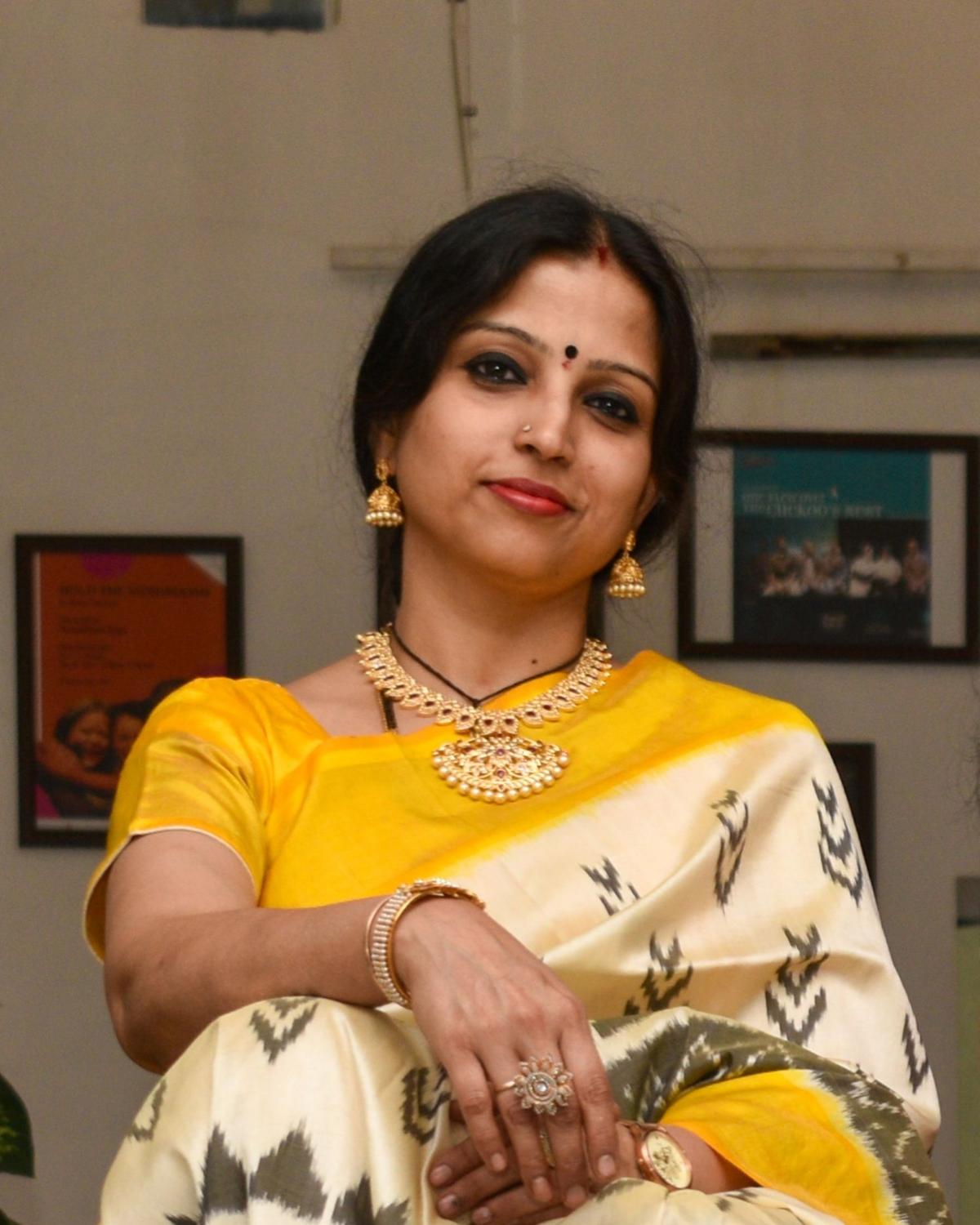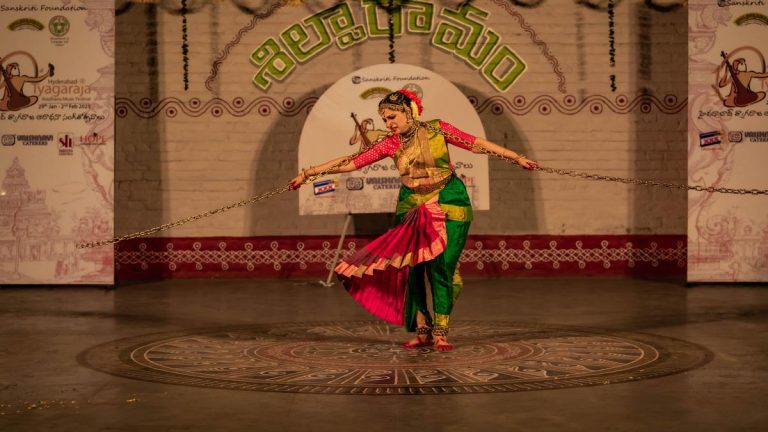
Srividya Angara in a scene from Manomanthana
| Photo Credit: Special Arrangement
Jagadananda Karaka, Endaro Mahanubhavulu or KaniKontini — may sound familiar to any classical dance or music patron. These are some of the most used works of one of the greatest poets, Tyagaraja, in Indian classical music and dance. He is often also identified with the Bhakti movement. To celebrate the legacy of Tyagaraja and the relevance of his works in today’s world, Bengaluru-based Kuchipudi dancer, Srividya Angara Sinha, will present her dance production, Manomanthana, which translates as the Churning of one’s mind).
The dance production, Srividya explains, is a thematic production. “Tyagaraja had an incredible range of musical expertise of Carnatic music. He could compose songs on the go. He was driven by his love and devotion for Rama. Tyagaraja was a man who was clear about what he wanted.”
He was invited by Serfoji II (King of Thanjavur) to sing in his court, Srividya says. “The king promised the poet gold and riches, but Tyagaraja declined, feeling it would chain his creativity. It takes a lot for someone to take such a call.”
He is also known to have never given a public performance, Srividya says. He must have been subjected to ridicule for not monetising his talent to provide for his family. That sense of abandon is what lent itself to the intensity of his lyrics and to the fact that his lyrics still survive.”
The dancer, who is also the co-founders of Citsabha Collective, goes solo with Manomanthana. “Tyagaraja used lyrics to express his love, anger, frustration. His emotions came out through verses that were enveloped in ragas and placed at his deities’ feet, signifying the bhakti movement. His works talk about his simplicity.”
The dancer says she was introduced to Tyagaraja one day when she picked a cassette that has reditions of a few compsoitions by Dr Balamurali Krihsna. “‘Enduku Dayaradu ra’, a composition of Tyagaraja, hit me like a hammer. I sat there stunned with the lyrics and angst.”

Credit is due to Dr Balamurali Krishna for his beautiful rendition, Srividya says. “The original poet’s heart, the angst and the pain laid bare in the lyrics has the power to be carried down the giant cascade of time. This intensity must have been born of his clarity in what he chose to do. I decided I had to bring his works to life through dance.”
Manomanthana, Srividya says, was created in 2019, which first presented at the very vigrahams that Tyagaraja would worship at on Tyagaraja Jayanti. The 67-minute dance will feature different songs that she will dance to. “Every song is connected with a short dialogue between each song, that I composed. The dialogue is a thread that weaves the poems as one dance.”
Srividya says, the dance talks about the varied bonds we put on ourselves. “This is represented by a seven-foot brass chain, which I dance with on the stage. Tyagaraja says, chanting the name of Rama can lead to liberation.”
The dance, Srividya says has some of Tyagaraja’s works where he asks god why he did not come to his rescue when he needed him the most. “It talks about the first death (of ignorance) and awakening from this state with awareness or enlightenment. There are many spiritual and personal layers to his works, which made it tough for me to pick and choose what I wanted to work with.”
Manomanthana will be presented on April 15, at BIC, Bengaluru at 7pm. It is open to all.
Published – April 15, 2025 10:35 am IST

